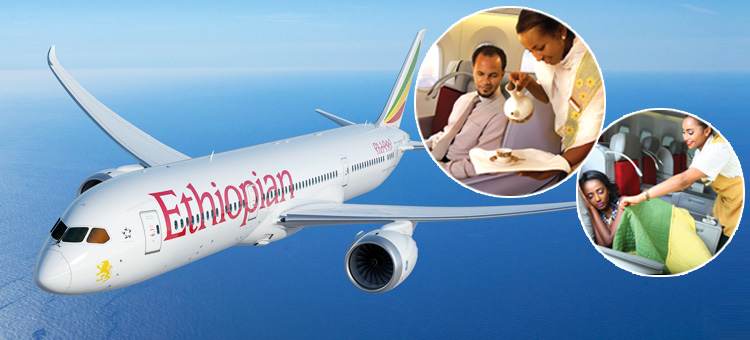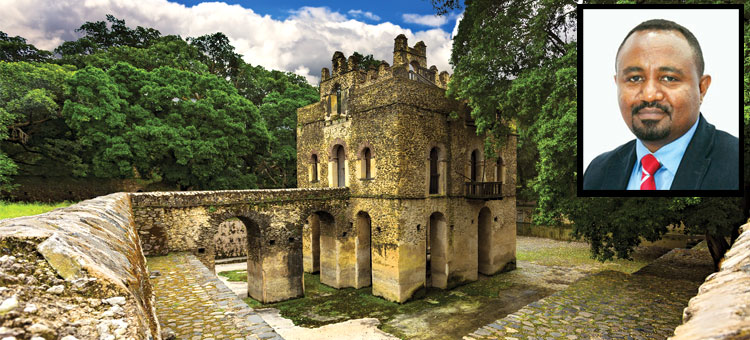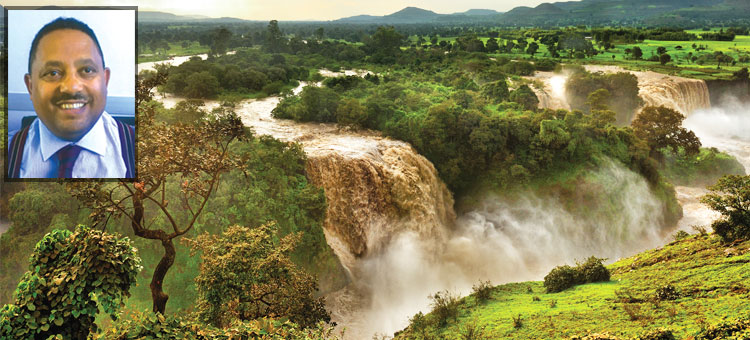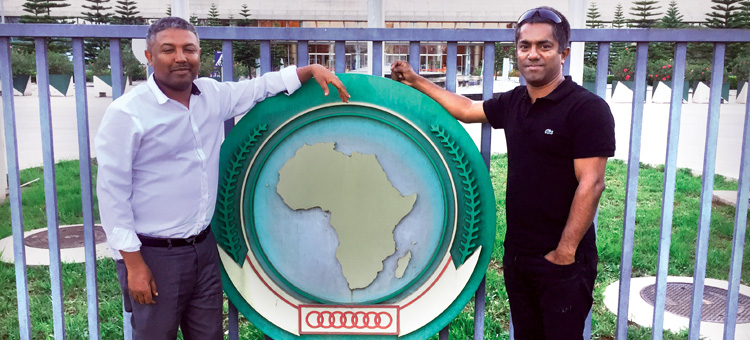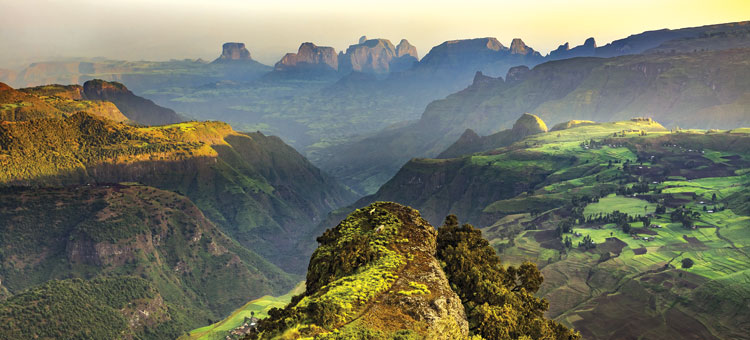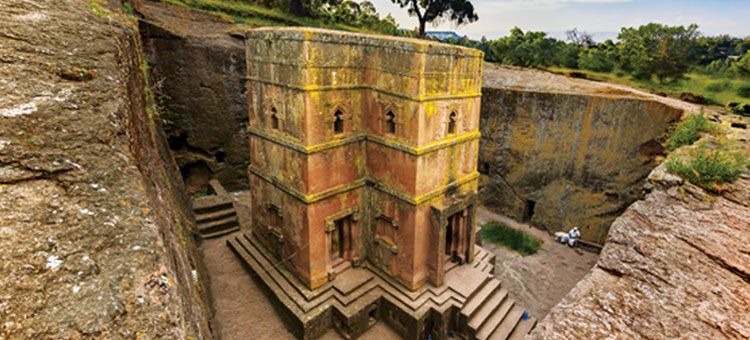Addis Ababa: There is a silver lining in everything unfortunate. At least in my Jet Airways story, I would like to see it that way. Nothing else can explain the opportunity I had to explore a country I never thought I would ever get to visit. Thanks to 9W cancelling the Mumbai-Manchester schedule, which I was to fly to attend a travel trade gathering, I was forced to rebook and ended up on Ethiopian Airlines with a nine-hour stop over in Addis Ababa. Yes, of all places!
In transit in Addis Ababa, the writer discovers that the modern city today retains its distinctly genuine character derived from the past which manifests seamlessly in its architecture, music, dance, cuisine and above all, the people. That’s too many reasons to return and explore the Land of Origins and the birthplace of coffee
I was finally going back to Africa after 37 years – I was born in Tripoli (Libya) and spent my childhood there when Col. Gaddafi was at his best. Thanks to Blue Square Consultants (BSC), Ethiopian Airlines and ET Holiday’s market representative in India, a transit tour was organised for me to explore the city.
According to the World Travel & Tourism Council’s (WTTC) annual review, Ethiopia saw the highest tourism growth in the world (48.6 per cent), surpassing the global average growth rate of 3.9 per cent and the African average of 5.6 per cent. During the period, the sector supported 2.2 million jobs and contributed $7.4 billion to Ethiopia’s economy, an increase of $2.2 billion on 2017.
Ethiopian Airlines (Ethiopian), now in to its 73rd year, is the largest Aviation Group in Africa and SKYTRAX-certified Four-Star Global Airline. It is the fastest growing airline in Africa and commands the lion’s share of the Pan-African passenger and cargo network operating the youngest and most modern fleet to 120 destinations across five continents. A multi-award winning airline, Ethiopian has registered an average growth of 25 per cent in the past seven years.
Thanks to Addis Ababa’s strategic location at the centre of the East-West lane and the ever-expanding service of Ethiopian Airlines, the city has emerged as the major gateway to Africa, surpassing even Dubai. Ethiopian’s Business Class experience is state-of-the-art. Additional baggage allowance, priority boarding, flat beds, 2-2-2 configuration seating, excellent inflight service and access to their Cloud Nine lounge at Bole International Airport Addis Ababa. The lounge offers Business Class passengers a variety of food and drinks, open bar, relaxation room, business center and free internet access. There is also a traditional Ethiopian Coffee ceremony station.
“We have not done much on the promotion and advertising side like some of the Middle East carriers,” says Tadesse Tilahun, Regional Director, India Sub-Continent, Ethiopian Airlines. “But our product is superior. None of the big carriers in the Middle East or Europe has a fleet this young. Passengers who have experienced our service continue to fly us.” I was met by Mohammed Yassin of ET Holidays (tour operator wing of Ethiopian Airlines) and whisked away to their headquarters nearby. The international airport is undergoing a massive expansion program since 2012 and in January 2019 Prime Minister Abiy Ahmed Ali inaugurated the expansion of Terminal 2. The airport, currently serving 13 million passengers, will be able to handle 22 million passengers annually when the works are completed.
The stopover packages (at no extra cost) were rolled out to promote tourism into Ethiopia because 70 per cent of total traffic on Ethiopian to Addis Ababa is transit in nature. Passengers travelling through Addis Ababa and continuing their journey to one of the destinations on Ethiopian’s network can take advantage of stopover offerings from ET Holidays, enabling them to discover and experience the many historical, cultural, religious and natural treasures of Ethiopia, the Land of Origins. An online e-visa service for processing stopover visa is available for all international visitors to Ethiopia at www.evisa.gov.et. Though Indians are eligible for visa on arrival, it is better to apply online as it takes just four hours and one can avoid the queue at the airport visa counter.
The packages range from sightseeing in Addis Ababa, the diplomatic capital of Africa, to visits to the pre-Christian era obelisks of Axum, the stunning medieval rock-hewn churches of Lalibela, the amazing 9th century mosques of Harar, the majestic castles of Gondar, the stunning source of the Blue Nile, the jaw-dropping Simien Mountains, the splendour of the lakeside resorts of Hawassa and Arba Minch, or the unique coffee farms of Kaffa, birthplace of coffee, and much more.
ET Holidays’ mandate is to increase the number of leisure visitors mainly to Ethiopia and other Sub-Saharan destinations by developing attractive affordable packages and tailor-made packages based on client requests. “We are working with partners like tour operators and hoteliers in Ethiopia and other destinations in Africa and around the globe,” said Dr. Zewdu H Mariam, Head, ET Holidays. “We want at least 50 per cent of guests flying Ethiopian to explore our country.”
In case transit passengers opt to rest, Ethiopian offers complimentary accommodation at their brand new Ethiopian Skylight Hotel featuring 373 rooms – the biggest in Ethiopia. The city tour package which I was offered took me around Addis Ababa. I visited The National Museum, did some souvenir shopping and called it a day with a traditional Ethiopian dinner. There is a massive construction boom in Addis Ababa – hotels, commercial towers and shopping malls are getting built all over the city. “All of these developments which are transforming Addis Ababa into a modern city are happening in the last decade,” says Wondwossen Getaneh, Team Leader – Holiday Product Distribution, ET Holidays.
Ethiopia is very safe and secure, even for women travellers. In Addis Ababa, I could barely find any policing on the streets. Even at government establishments, including the central bank (National Bank of Ethiopia), there is hardly any presence of security forces. The PM’s residence (Menelik Palace) also has minimal security and one can drive around the property. The traffic is chaotic like in India. Japanese and Korean brand cars fill the street. There are also 12-seater mini-vans which are the taxis. Addis Ababa looks like any Indian city, for that matter.
Ethiopian men and women, especially the youngsters are very fashionable. During the city tour, many of them spoke to me in Amharic, their national language. Getaneh told me it is because they think I am a local! “Since you are not as dark skinned as people down south, they think you are one of them.” I took it as a compliment.
The civil conflicts and communist purges of the 70s and 80s are a thing of the past. Muslims and Christians live harmoniously today. I asked Getaneh about the low security and he had this to say: “We are a peaceful country. There are no tensions between religious or ethnic communities. So there is no need for heightened security measures.” It is difficult to believe 83 ethnic groups also call Ethiopia their home. What an eclectic mix of cultures, traditions, customs and beliefs!
International hospitality brands like Four Points by Sheraton, Hilton, Hyatt Regency, Radisson Blu, Marriott and Intercontinental Hotels all have a presence here. We first visited The National Museum at Five Kilo (the name of the place means five km from Piazza, the city centre). The museum houses many precious local archaeological finds such as the fossilized remains of early hominids, the most famous of which is ‘Lucy’, the partial skeleton of a specimen of Australopithecus afarensis. After this we drove around the city for an hour checking out various monuments and streets.
The Tiglachin monument, a memorial to Ethiopian and Cuban soldiers involved in the Ogaden War, is in Churchill Avenue. Churchill Avenue is a fine testament to the all round development the city has witnessed. The National Stadium is nearby; so is the railway station built in 1929 facing the Lion of Judah monument – a symbol visible everywhere, including aircraft livery of Ethiopian. Millennial tourists prefer to stay around the Tiglachin and Stadium as the location has easy access to all places of tourist interest and quality accommodation is available for very economical prices.
We also checked out the tallest building in Ethiopia under construction, the Commercial Bank of Ethiopia. It will dethrone the African Union headquarters which is currently the tallest. Parliament, Ministry of Education, Addis Ababa University, Mercato open-air market, Meskel Square, St. George’s Cathedral and Ethiopian National Theatre were also knocked off my ‘see from outside list’.
Piazza is the heart of Addis Ababa and the old neighbourhood which still captures the spirit of the past. Empire Cinema, the oldest in the whole of Africa, is here. Jewellery shops line up the streets like in Indian cities. Kazanchis, one of the oldest parts of the city, is today Kazanchis Business District, thanks to brisk development. Hotels like the Radisson Blu and Intercontinental are here. Many more are being built.
Ethiopia has bustling night life – discos, lounges, pubs, you name it, and liquor is easily available. There are specialty restaurants with cultural dance performances and live singing, too. Edna Mall on Cameroon Street near the airport has some of the best bars and lounges.
We reached Yod Abyssinia cultural restaurant by 7 pm. Abyssinia is the ancient name of Ethiopia. To dine at this sought-after place a prior reservation is a must. Diplomats and other guests of the government are all hosted here for an authentic Ethiopian experience. The local affluent also frequent the place.
The best-known Ethiopian cuisine consists of various types of thick meat stews, known as wat in Ethiopian culture, and vegetable side dishes served atop injera, a large sourdough flatbread made of teff flour. This is not eaten with utensils, but instead one uses the injera to scoop up the entrées and side dishes. Almost universally in Ethiopia, it is common to eat from the same dish in the centre of the table (mesob – woven Ethiopian basket) with a group of people. It is also a common custom to feed others in your group with your own hands — a tradition referred to as “gursha”. Traditional Ethiopian cuisine employs no pork or shellfish of any kind, as they are forbidden in the Ethiopian Orthodox Christian, Islamic and Jewish faiths.
On stage, all through the night there are cultural dance performances and live rendition of folk songs. The songs have a signature beat to it and the dance which starts with slow moves steadily turns into a physical exercise as the tempo of the music reaches a crescendo. The place is crowded but the food is totally worth it. The National Buffet as they call it is $20 excluding tax.
In the next five years, at this feverish pace of development, Addis Ababa will be a futuristic city with a booming tourism industry. The modern city today retains its distinctly genuine character derived from the past which manifests seamlessly in its architecture, music, dance, cuisine and above all, the people. I don’t think this will ever change. That’s too many reasons to return and explore the Land of Origins and the birthplace of coffee.
(The author was hosted by Ethiopian Airlines and ET Holidays)

